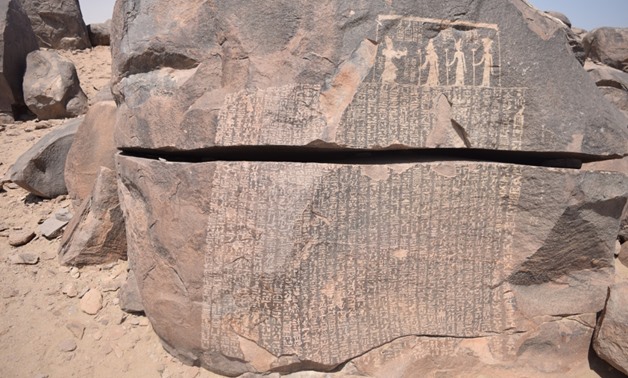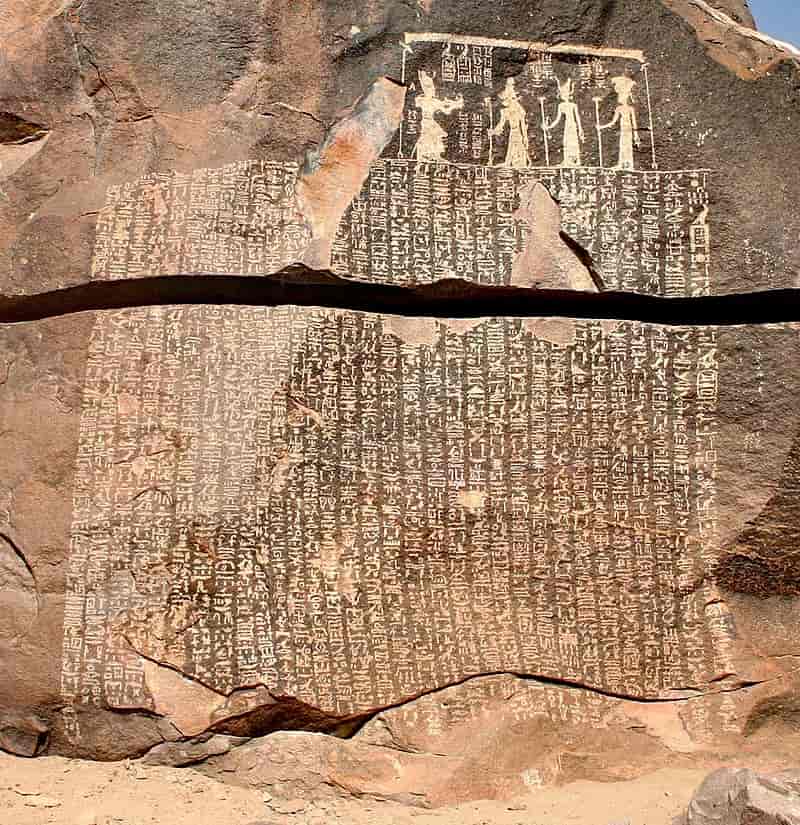The Famine Stela is a remarkable artifact that sheds light on the socio-political and religious landscape of ancient Egypt during a significant crisis. Discovered on Sehel Island near Aswan, this ancient inscription provides invaluable information regarding the impact of environmental disasters on society and the ways in which leaders sought divine intervention.
Historical Context
Dating back to the reign of Pharaoh Djoser of the Third Dynasty (circa 2686 BC – 2613 BC), the Famine Stela recounts a harrowing tale of a seven-year drought and famine that plagued Egypt. This inscription was later engraved by King Ptolemy V during the Ptolemaic Kingdom around 205-180 BC. The stela serves as a testament to the trials faced by the ancient Egyptians, showcasing how natural calamities could lead to widespread suffering and social unrest.

Religious Significance
At the top of the stela, Pharaoh Djoser is depicted making offerings to Egyptian deities, symbolizing the importance of seeking divine favor during times of distress. This reflects the ancient Egyptians’ belief in the pharaoh’s role as both a political leader and a spiritual intermediary between the gods and the people. By turning to the gods in moments of crisis, the pharaoh sought to reaffirm his authority and responsibility for the welfare of his subjects.
Cultural Connections
The Famine Stela initially drew connections to the biblical narrative of a seven-year famine described in Genesis 41, where the story of Joseph interpreting Pharaoh’s dreams unfolds. However, further research has illuminated similar accounts in Mesopotamian legends and the Gilgamesh Epic, suggesting a recurring theme of drought and famine across ancient Near Eastern cultures. This shared narrative emphasizes the collective human experience of grappling with the uncertainties of nature and its effects on civilization.

Broader Implications
Another account of prolonged drought is found in the “Book of the Temple,” reinforcing the idea that environmental challenges were significant enough to be chronicled across various texts and cultures. The existence of these narratives highlights the necessity for leaders to respond to crises, demonstrating the interplay between environmental factors and societal resilience.

Conclusion
In conclusion, the Famine Stela stands as a crucial artifact in understanding the complexities of ancient Egyptian civilization. It not only provides insight into the societal responses to environmental crises but also showcases the religious and cultural dimensions of leadership during challenging times. As a historical document, the Famine Stela reminds us of the enduring struggle against adversity and the human desire for meaning and guidance through religious narratives. Its discovery continues to enrich our understanding of the ancient world, revealing the interconnectedness of environment, society, and spirituality in the face of disaster.

